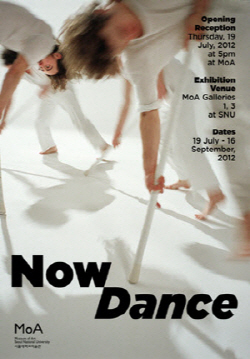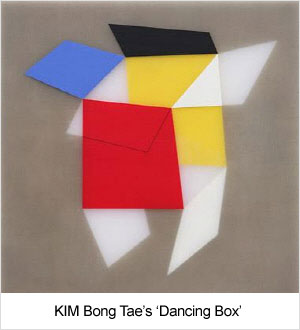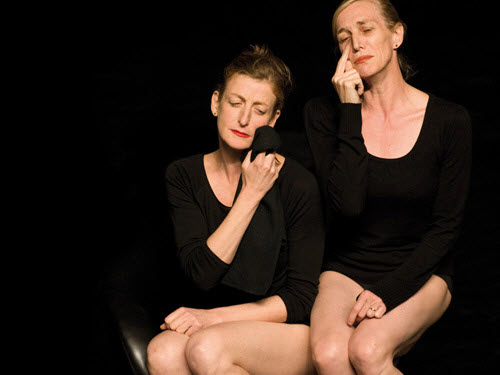 The SNU Museum of Art (MoA) opened a new exhibition titled Now Dance on July 19, 2012.
The SNU Museum of Art (MoA) opened a new exhibition titled Now Dance on July 19, 2012.
The exhibition focuses on awareness of the body in contemporary society through the independent postmodern art genre of dance.
The exhibition features various artists who have explored the foundations of postmodern dance and artistic characteristics such as Mathilde Monnier, Pina Bausch, Nacho Duato, William Forsynthe, Sasha Waltz, and Lloyd Newson. Furthermore, through the works of Joel Shapiro, Julian Opie, BAEK Nam June, KIM Bong Tae, CHOI Seung-Hee, AHN Eun-Me, LEE Yong Deok, and CHO Hye-Kyung the horizon and understanding of the concept of dance are both widened.
 Throughout the exhibition dance is portrayed through the utilization of various forms of media -- videos, paintings, photographs, sculptures, and more. The diversity of the mediums show that the art of dance is not limited to the stage but rather an experience that can be found everywhere, even in mundane instances in life. Take KIM Bong Tae’s ‘Dancing Box’ selection for instance. It is said that the artist happened to pass by some discarded cardboard boxes and sought to re-utilize them in a way that would bring happiness to viewers in an unexpected manner. Kim uses primary colors to fill in the rectangular shapes on the canvas. Experimental, Kim’s ‘Dancing Box’ selection oddly captures in a simplistic manner the jovial dancing movement, if one can call it so, of a box.
Throughout the exhibition dance is portrayed through the utilization of various forms of media -- videos, paintings, photographs, sculptures, and more. The diversity of the mediums show that the art of dance is not limited to the stage but rather an experience that can be found everywhere, even in mundane instances in life. Take KIM Bong Tae’s ‘Dancing Box’ selection for instance. It is said that the artist happened to pass by some discarded cardboard boxes and sought to re-utilize them in a way that would bring happiness to viewers in an unexpected manner. Kim uses primary colors to fill in the rectangular shapes on the canvas. Experimental, Kim’s ‘Dancing Box’ selection oddly captures in a simplistic manner the jovial dancing movement, if one can call it so, of a box.
But not all pieces are so straightforward. LEE Yong Deok’s ‘I’m Not Expensive’ piece looks as if it has no solid connection to dance. This piece, a massive three-dimensional carving, takes up the entire horizontal wall of the main exhibition area. A man and a woman holding hands ready to dance, a toddler on a woman’s back, a 1958-ish Volkswagen Beetle, placed in a metropolitan street with coffee shops in the background, all painted in surreal negative-print colors. From a distance, the individuals seem to be convex, popping outwards. But the fascinating truth is that upon stepping closer to the massive piece, one can see that the individuals are actually curving inwards. And depending on the angle from which you look at the piece, the size of each individual seems to change. Only when you view it from all sides can you experience the painting fully. Lee seems to send a message about perspectives-- that to see dance in everyday life, the movement of the viewer is imperative.

LEE Yong Deok’s ‘I’m Not Expensive’
A startling realization you may come to is that the majority of the pieces that seem to evoke the essence of dancing do so without any aid of music or sound. To undermine the common idea that dance must be accompanied with sound, this too is done on purpose. But one room in which sound can be heard, the room that shows videos -- a most conventional form of exhibiting dance -- is the most unconventional manifestation of all. Six screens simultaneously project half a dozen distinct dances. One that is particularly confounding is French choreographer Mathilde Monnier’s performance. Looking like twins, two women wearing black to match the draped dark backdrop are continually lifting their pants to show their knees. One mimics the other, but it seems as if each action brings about a stronger and more forceful reaction. Another screen shows a mundane dance room where people rehearse their moves. A separate screen displaying people doing contortions like acrobats conveys that the body is stressed to the extreme. Yet another screen shows convoluted clips, with fast cuts, and seemingly irrelevant scenes that somehow all tie in. All this, occurring at once, seems to be yet another declaration of the countless facets of dance.

Mathilde Monnier’s performance
Friedrich Nietzsche’s early 20th century philosophy which brings new light to the understanding of the human body and its freedom and ability of expression through the heat of dance is also revealed. This particular section of the exhibition seems to demonstrate that what is thought of as an important artistic genre to heal the contradictions of the logos-centric bias of Western culture, dance is an instinctive and immediate experience dealing with the anti-rational universe. It stresses expressive sensibility; the irrational. To understand one must not try to understand; to feel one must simply feel.
Now Dance, along with creating an understanding of the human body, attempts to instigate a new awareness of the significance of dance as a motif in art history and contemporary life. It is a manifestation of postmodernism, where the action of lifting your pants to show your knees continuously is a form of dance, where the concept of ‘dance’ itself is quite fluid. As Friedrich Nietzsche stated, “The body is a great wisdom, a plurality with one sense, a war and a peace, a flock and a shepherd”. All previous traditional views of what defines ‘dance’ are revised, with the image of a dancing box to remind you that ‘dance’ can be found everywhere.
Written by OH Jung Eun, SNU English Editor, josefinaoh@snu.ac.kr
Reviewed by Eli Park Sorensen, SNU Professor of Liberal Studies, eps7257@snu.ac.kr
Proofread by Brett Johnson, SNU English Editor, morningcalm2@gmail.com

